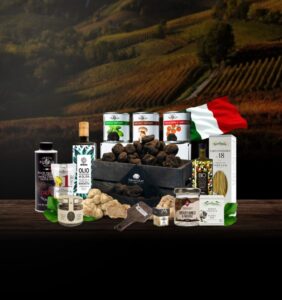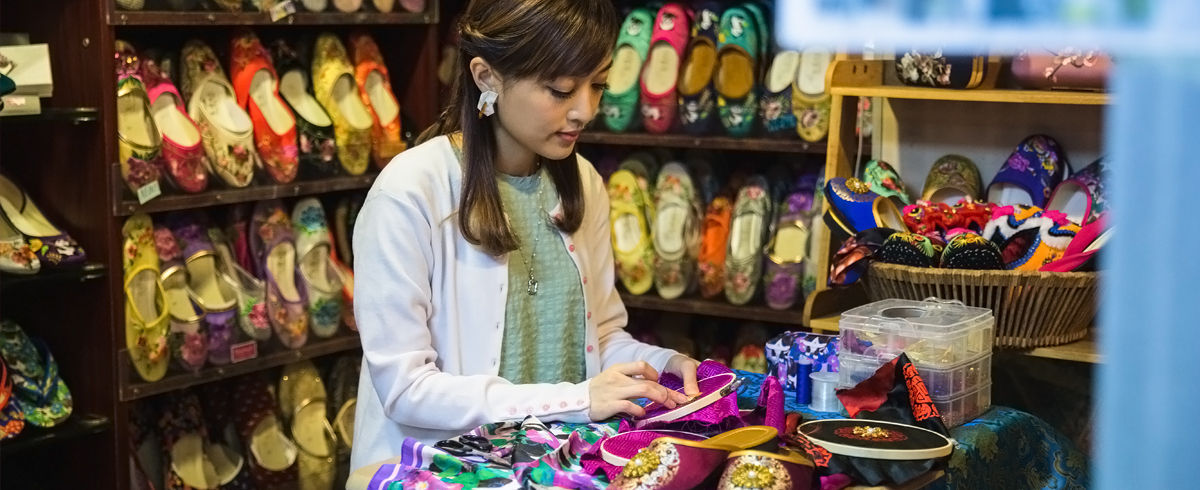
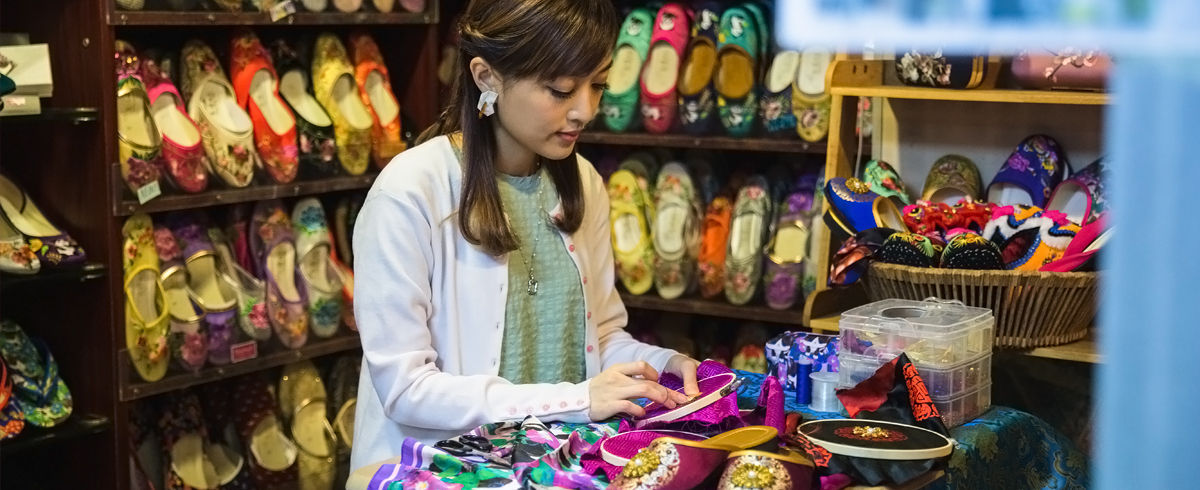
As Hong Kong’s borders reopen to international travel, the Pearl of the Orient invites travellers to indulge in luxe experiences through its legendary traditional art scene.
From fashion to fine-dining, “savoir-faire” is frequently used to describe the competence, skill, and knowledge prerequisite to creating authentic luxury goods and experiences. At the crux, craftsmanship is essential to all matters of luxury. Amid Hong Kong modernity, the West Kowloon Cultural District remains home to master craftspeople with decades of know-how in traditional Chinese art forms that have persisted for centuries.
With deft hands, boundless imagination and meticulous attention to detail, these artisans help define the city as a unique luxury destination. Adding a personal touch, these masters help connect global consumers to opulent traditional trades that enhance other lush adventures awaiting you in the city.
Far from an exhaustive list, here are five local arts you should explore and our thoughts on the most luxurious modes to appreciate them:
Ming Sang Steel Bamboo Receptacle
Ming Sang Steel Bamboo Receptacle plays an influential role in Hong Kong’s famed culinary scene, revered by home cooks and Michelin star chefs alike. As the manufacturer and sole agent of stainless-steel steamers, bamboo steamers, decorative stainless-steel cutters, piping tubes, sculpture knives and other kitchen utensils, the Shanghai Street store is a must-visit for passionate cooks. Bamboo steamers are an essential fixture in Cantonese cuisine, with Ming Sang carrying them in an assortment of shapes and sizes.
The owner, Master Lui Ming, began to handmake bamboo steamers when he was 32 years old. Now well into his 90s, the master craftsman still handmakes some of the steamers sold in the store. A genius inventor, Lui was also the first to engineer steel rims and joints in bamboo steamers. The result is a more durable product that has seen widespread use in Chinese restaurants internationally. The steel rims result in steamers with fewer gaps for vapour to escape, allowing a more concentrated heat to steam a variety of dim sum delicacies to perfection.
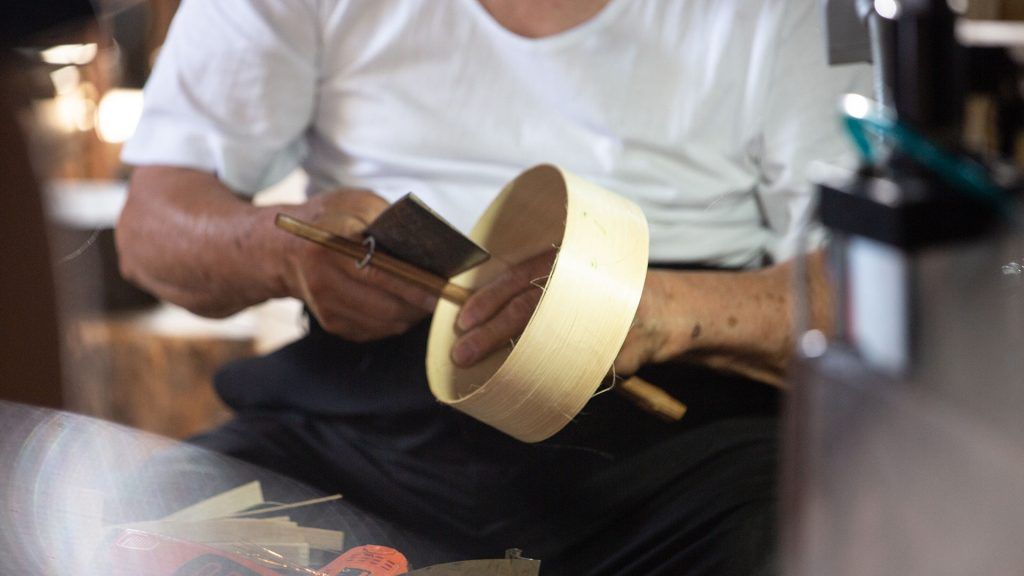
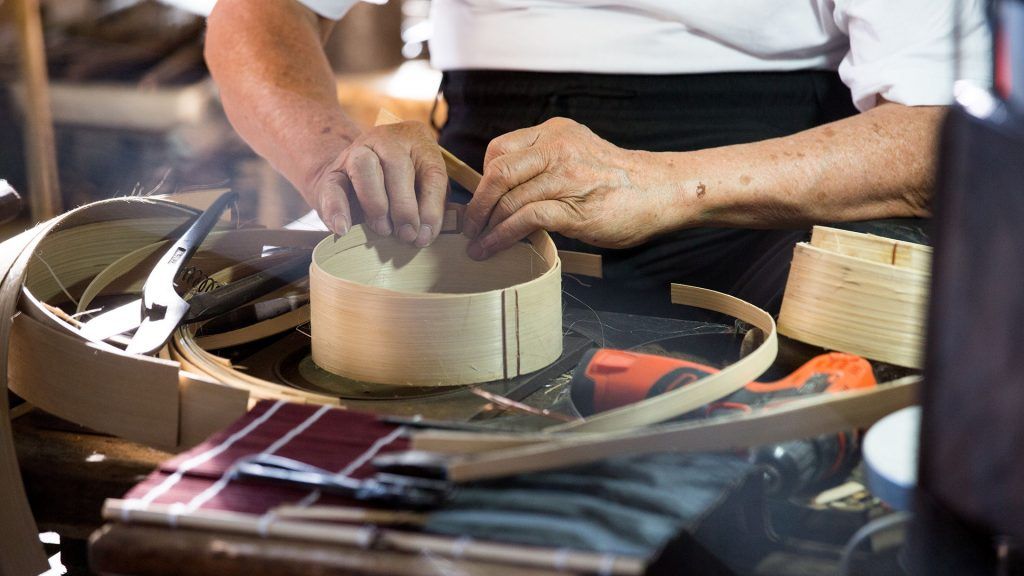
The store is now run by Lui’s son, Lui Lok-Koon, while the senior artisan prefers to spend his days making custom orders in his Tuen Mun factory. There, he pours lifelong passion for his work into creating new inventions and refining his old ones.
Travellers to Hong Kong are spoiled for choice when indulging in the local cuisine, and no trip would be complete without sampling Hong Kong-style dim sum at Tim Ho Wan. Founded in March 2009 by Mak Kwai-Pui and Leung Fai-Keung, the original Tim Ho Wan in Mong Kok earned a Michelin star for its outstanding authentic Cantonese food. The original Mong Kok location relocated to Olympian City in 2013, with five subsequent branches opening throughout Hong Kong.
Cheung Shing Fans Factory
Since 1958, Cheung Ching Fans Factory has been selling sandalwood fans and incense on Shanghai Street. Although once regarded as a status symbol among the affluent class, sandalwood fans are becoming increasingly rare to find.
Today, Lowell Lo is the second-generation owner of Cheung Shing Fans Factory and one of few remaining sentries of Hong Kong’s fading sandalwood fan industry. As a boy, Lo paid close attention to his father, Lo Che-Tak, a Guangdong native who had learned the craft of making sandalwood fans as an apprentice in Hong Kong. By the 1960s, the shop was also selling incense sticks for worship.
Lo regards his father as an enterprising visionary. He watched the master craftsman graduate from handcrafting fans to developing machinery to increase production. The quality was uncompromised, each carefully articulated creation precise and delicate.
Although Cheung Ching Fans Factory used to produce sandalwood fans for export to the global market, the increasing costs of sandalwood and the gradual decline of skilled artisans had a hard impact. Now, the business focuses on producing incense sticks, coiled incense, powdered sandalwood, and agarwood incense for burners.
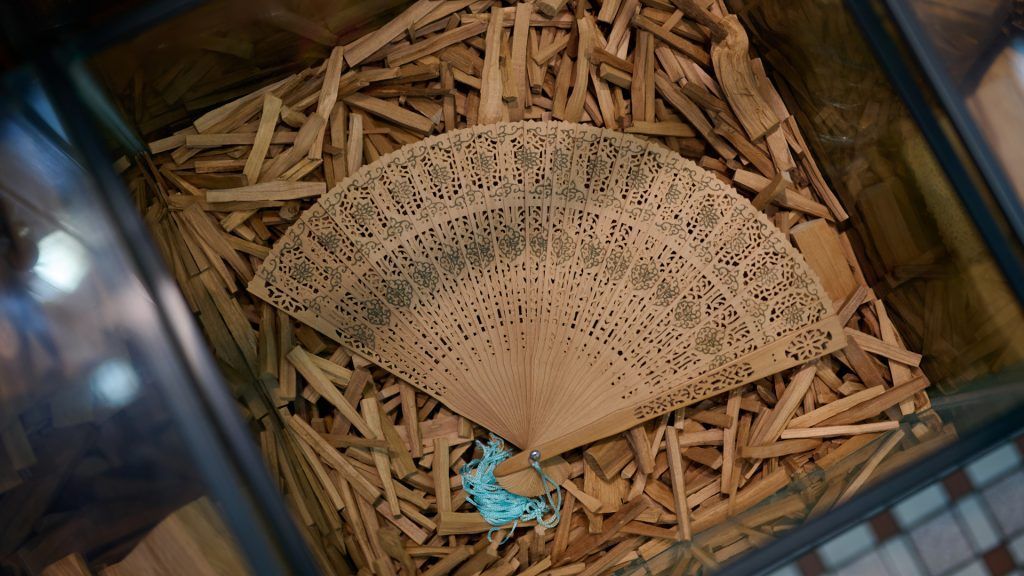
Avoiding harsh perfumes and chemicals, Cheung Ching Fans Factory creates incense derived exclusively from natural materials. The cost varies depending on the source of the sandalwood and its location on the tree. Lo hopes to encourage more people to embrace incense as another means to calm the mind and not just for religious use.
After all, appreciating fine fragrances is deeply rooted in Chinese culture, even recorded by the prosperous Song Dynasty (960-1279) as an integral facet of leisure culture.
These incense creations make the perfect gift for loved ones or yourself. It is the best way to bring home a piece of Hong Kong’s heritage to incorporate into your wellness routine, whether that entails soaking in a luxurious bubble bath or meditating.
If you manage to secure a rare sandalwood fan, take it with you to the Yau Ma Tei Theatre to enjoy a little Cantonese opera while feeling like a noble. Built in 1930, the theatre is the only surviving pre-war cinema building in the urban area of Hong Kong.
Faithfully restored to the original, the colourful venue welcomes audiences to sit under the original roof beams to enjoy regular performances by rising stars. Some shows include English subtitles, allowing non-Cantonese speakers to follow the story.
Sindart
Sindart was founded in 1958 and is one of the oldest stores in Hong Kong that makes and sells traditional handmade embroidered Chinese footwear. In the past, ladies of the upper and middle class often wore silk-brocade slippers inside their homes.
Today, Miru Wong operates a small shop in Jordan as a third-generation owner. She took an interest in embroidery at an early age, beginning to practice with her grandmother in primary school and later learning how to make shoes from her grandfather in high school.
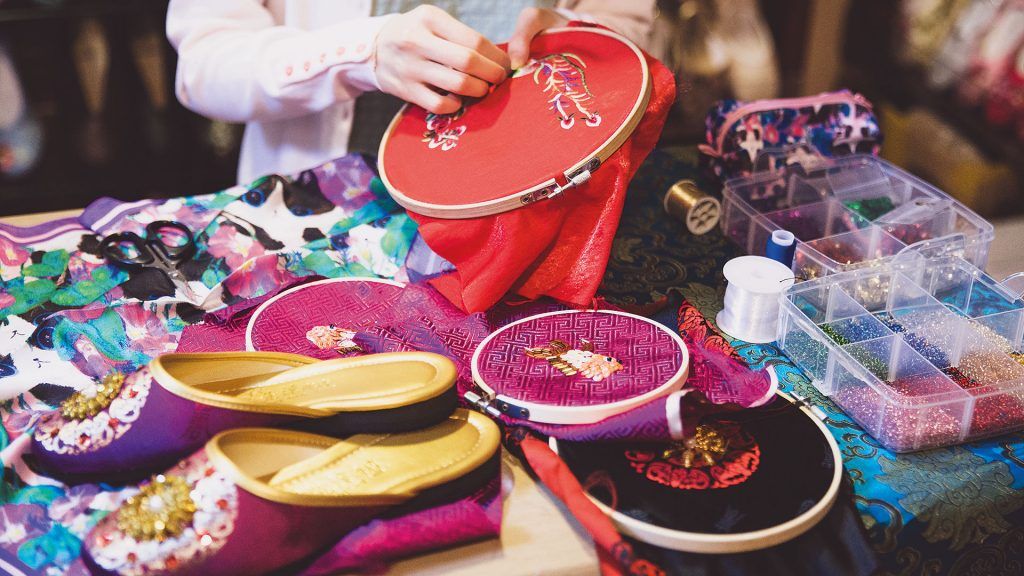
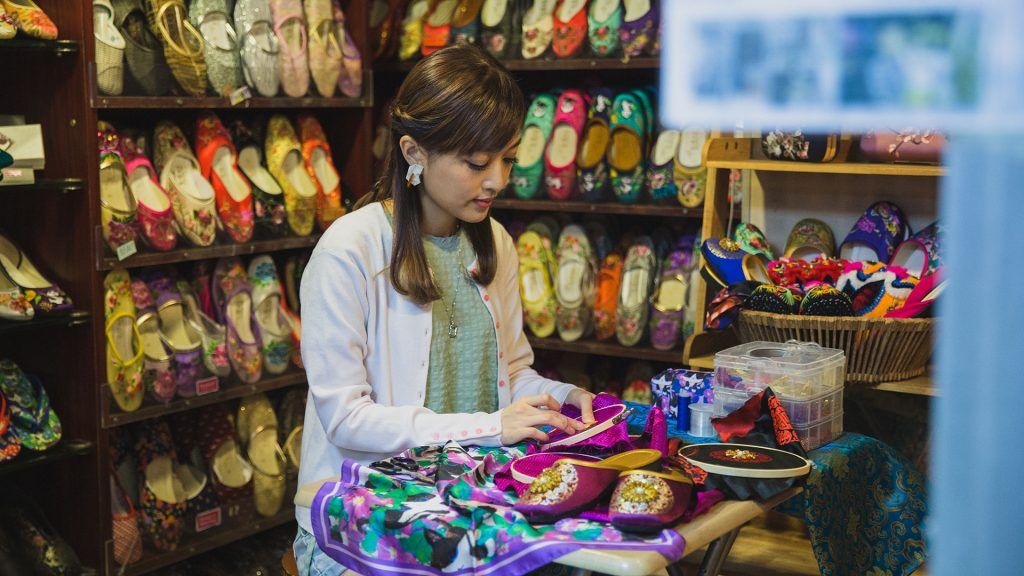
Trained in Visual Communication, Miru bridges the gap today between the past and present as she preserves the traditional designs of Sindart’s slippers with new designs thoughtfully infused with modern elements. The young artisan is partial to animal motifs such as pandas and owls to non-traditional blooms like camellia and cherry blossoms. Beyond slippers, Sindart also creates flats and heels to be worn outdoors, alongside accessories and handbags.
Feel like Cinderella as you slip into a pair of Sindart slippers and go out on an adventure. The Peninsula Hong Kong offers travellers the chance to reserve an 18-minute flight-seeing tour and lunch for two persons in its “Fly and Dine” programme. Enjoy breath-taking views of Hong Kong’s harbour and the city before enjoying a sumptuous meal at The Verandah, Spring Moon, Felix, Gaddi’s, Chesa or The Lobby, depending on your dining preferences.
Shanghai Baoxing Qipao
Qipaos and Chinese cotton jackets are an invaluable part of Chinese history and heritage. Master Yan Ka-Man is keeping the tradition alive as one of the best qipao dressmakers in Hong Kong.
With over 65 years of experience, Master Yan’s work is made-to-measure for the ideal body-hugging fit. A skilled tailor understands how to consider the individual structure of a woman to create the most flattering silhouette.
Master Yan has worked with numerous A-listers, including Michelle Yeoh, Tang Wei and Anita Mui, well-versed in creating beautiful custom garments. Besides dressing Miss Hong Kong contestants, Master Yan has also crafted the wardrobe of actresses in Hong Kong director Wong Kar-Wai’s films.
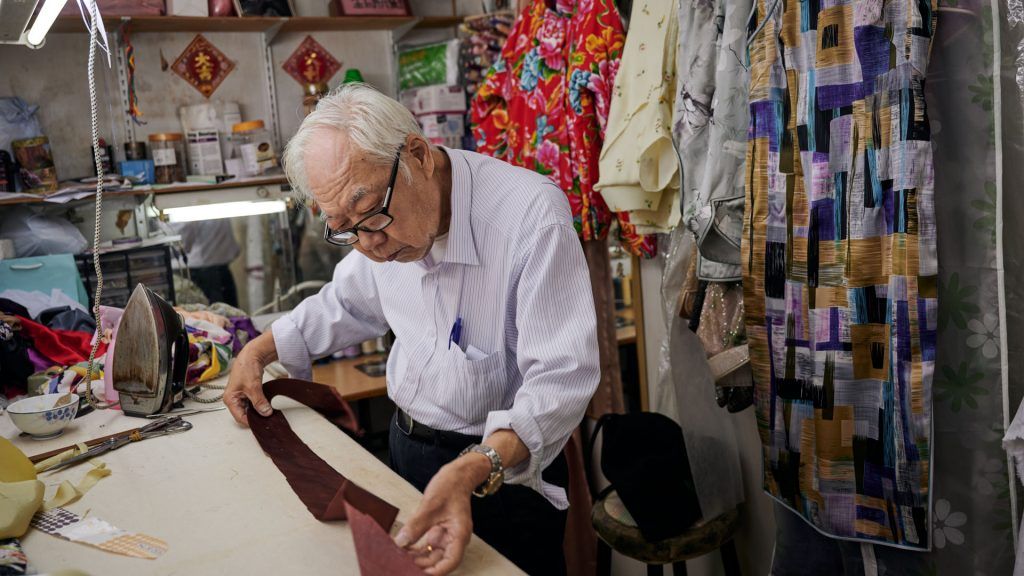
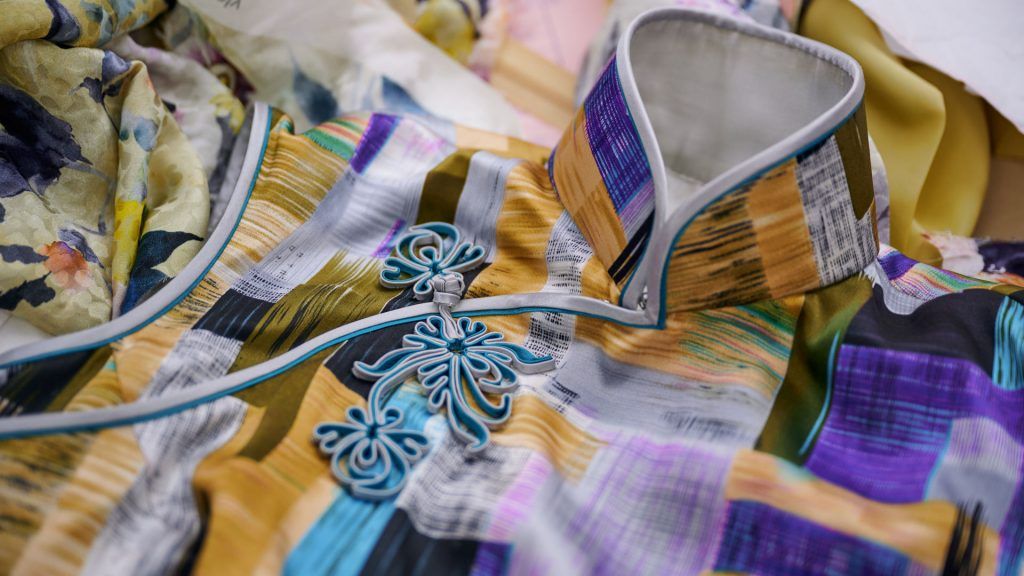
Shanghai Baoxing Qipao is one of Hong Kong’s last authentic bespoke tailors. It has been able to stay in tune with the times while upholding the highest standard of craftsmanship to offer quality ensembles for women of discerning taste.
If you’re keen on reinterpreting your romantic shots ala Maggie Cheung in In The Mood For Love (2000), consider a venture to Nan Lian Garden. One of Hong Kong’s best Instagram spots in front of Chi Lin Nunnery, nuns maintain the 35,000 sq/m gardens with several dreamy locations ideal for your perfect dolled-up holiday shot.
Yuet Tung China Works
Yuet Tung China Works in Kowloon Bay opened in 1928 as the first large-scale hand-painted porcelain factory in Hong Kong. Joseph Tso is a third-generation successor of the factory, conscious of its 90+ year history.
The factory sells a wide range of porcelain wares, including dishes, cups, bowls, vases, jars and more. Yuet Tung China Works is one of the last hand-painted porcelain factories in Hong Kong. All productions are an authentic reflection of the painting techniques and pattern designs of “Guang Cai” – a type of Cantonese porcelain with roots in the Qing Dynasty (1644 – 1912). The combination of fine craftsmanship and classic aesthetic result in pieces you would be hard pressed to encounter anywhere else in the world.
View this post on InstagramA post shared by 粵東磁廠 Yuet Tung China Works (@yuettungchinaworks_official)
In a sunsetting industry, less than a handful of painters remain working in the factory. Their meticulous works risk being the few remaining artefacts our generation can treasure of the traditional Cantonese craft. Fortunately, the store accepts customised orders from clients looking to take home bespoke designs.
High-quality porcelain has a homogenous surface that is totally water resistant. As a result, it does not absorb impurities and is easier to clean in addition to being more durable. Considered white gold, investing in Chinese porcelain is profitable as global audiences continue to regard it as a symbol of status.
The best way to enjoy fine porcelain is to indulge in another Hong Kong speciality: tea. Although there are dozens of tea shops to try, Ying Kee Tea House commands over 130 years of experience. Originating from Guangzhou, this tea shop specialises in Chinese teas such as Oolong, Pu-erh, and green and black tea. Award-winning tea masters brew every refined cup, committed to drawing out the distinctive taste of the leaves with their masterful skill.
With so many ways to indulge in Hong Kong’s traditional art scene, travellers can look forward to soaking up the culture through extravagant luxury experiences. Visit discoverhongkong.com to learn more about this dynamic city’s other traditional trades that deserve appreciation before this era ends.
The post 5 luxurious ways to appreciate Hong Kong’s traditional art scene on your next trip appeared first on Prestige Online – Singapore.

